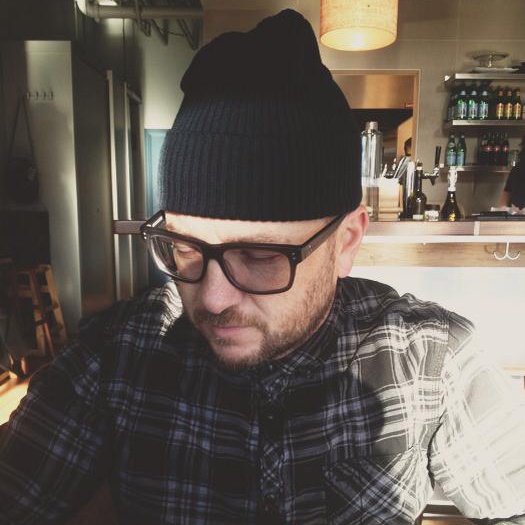PLAY x PLAY: Ceci n'est pas un curb | JAKE HUFFMAN
JAKE HUFFMAN is a husband, dad and UX designer currently living in Oakland, California. We asked Jake, a life-long skateboarder, to share his thoughts about how this activity had contributed to his creative development. In this personal essay, he explores how skateboarding has formed his ethos and impacted his approach; the result is a text filled with important lessons for all creatives.
A current project he’d like to share is the new on-line travel magazine Tiny Atlas Quarterly: tinyatlasquarterly.com
When Jake is not sitting in front of his computer you’ll likely find him surfing or skateboarding.
More Jake @ myrobothand.com
Ceci n’est pas un curb
by Jake Huffman
Skateboarding taught me everything I know about being a creative professional. The juvenile activity of rolling around on plywood and urethane helped form my mindset and shaped processes I use everyday.
Skateboarding is a prototype
To learn to skateboard is to learn that failing is not failure. When you try to do a trick and you fail, you fall, then you get back up and try again. You fall again and again and through each failure you learn something new about the trick you are trying to learn. Through this sequence of failures you ultimately learn what you need to do to achieve your goal. New trick! One of the tenets of design thinking is prototyping. You create a prototype and you keep what works and change what doesn’t work. By trying and failing you learn what works and what doesn’t work and you are better able to model a solution.
Skateboarding is a crime
Inevitably when you see a sign that says skateboarding is not allowed, you know that it’s a great place to skateboard. Even while skateboarding has become mainstream and there are now skateparks in cities and suburbs everywhere, the world outside of those skateparks is always more alluring to a skater. There are curbs, ledges, handrails and banks all over that are off-limits, but those are the places that beckon. Riding those will inevitably put you face to face with a guy with a badge telling you to stop. These face-offs with authority teach you that you need to carve out a space for yourself and your sport in a larger culture. Subculture/transgressive. As a creative person your job is to redefine culture, break norms, change standards and upend what is the status quo.
Ceci n’est pas un curb
A skateboarder approaches an obstacle such as a curb, and doesn’t see a curb, but instead finds a medium for a slappy. In a surreal moment the entire endeavor of skateboarding becomes transformative. Where the standard meaning of our said curb switches into something new. As a creative person you are always looking for ways to re-interpret re-organize your current world. What does an artist do? Whether you are taking paint and turning it into a representation of an apple, or taking a slab of lead and turning it into the representation of a jet, you are translating a language of physical things into your own language of symbols and objects.
There is no skateboarding in team
With skateboarding, it’s just you on your skateboard. It encourages an individual point of view. People on teams sublimate their individual viewpoints to try to solve problems. But to be a skateboarder is to try and find a unique execution of any maneuver. As a designer you always need to question assumptions of a group and contribute a unique viewpoint.
Style counts
The distinct style of a rad skateboarder is always apparent. They make hard things look easy. They have grace, they take moments where others would fall and turn it into an exiting exhibition. While one great skateboarder might express himself via force and power, a different one might do the same tricks, but exhibit finesse and control. The importance of style as a creative is to understand that how something looks and is perceived is ultimately what that thing is judged on.
Inside the playful activities of gliding and sliding are lessons for the creative process.
J.H. 2013
Published: September 11th, 2013





